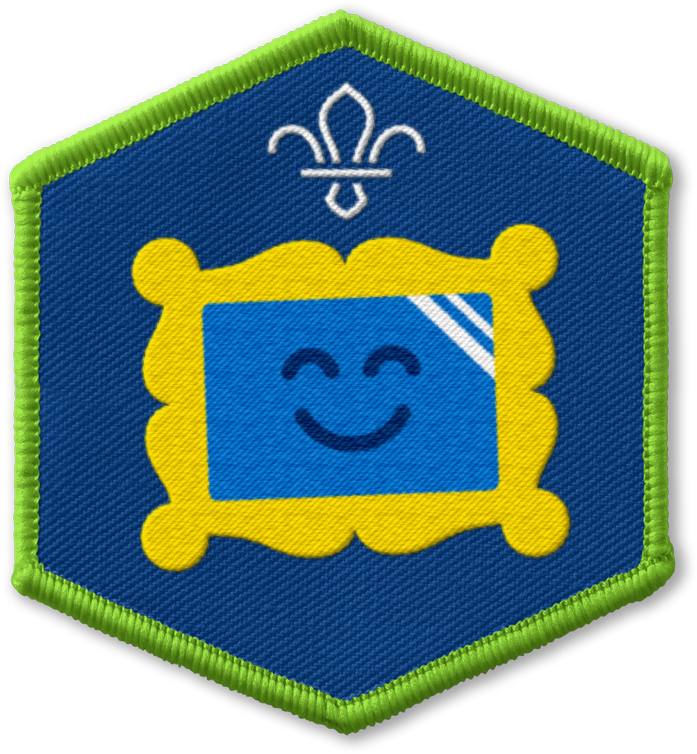I can do many things
You’ll need
- Coloured pens or pencils
- A4 paper
- Equipment for activities such as coats or objects (optional)
- Sticky tack (optional)
Before you begin
- Set out enough pens and paper for everyone.
- If you want to, you could ask everyone to bring in a coat with a zip for this session. Think about whether people will need to bring anything else to share their skills, or whether you’ll just chat about them instead.
Story time
- Everyone should sit in a circle.
- Someone should read I am I, and you are you by Jess Connett.
- Everyone should reflect on the story as a group. We’ve included some questions to help you reflect in the pink box below.
I am I, and you are you
There are many things we do.
Differences – we’ve got a few!
Cause I am I, and you are you.
You run fast, I’m rather slow
You plant seeds and watch them grow
That takes patience, don’t you know –
I’m more the type to go, go, go!
I could show you how to dance
Or put you in a magic trance
I’m good at watering the plants
I’ll teach you when I’ve got a chance.
You know how to brush your teeth
And tidy toys up underneath
Your bed: in fact, you’re very neat
To be your friend is such a treat.
I’m learning how to tie my shoes,
You make your bed after a snooze.
Let’s work together when we choose
A game to play – try not to lose!
It’s good I’m different from you
We can share and learn anew.
You’ve got skills and I have too!
Cause I am I, and you are you.
By Jess Connett
This is what I can do
- The person leading the activity should introduce the activity. They can explain that it’ll help everyone learn new things and give them a chance to show each other how to do them.
- Everyone should work with the person sitting next to them to draw around their partner’s hand on the piece of paper in front of them.
- Everyone should write their name and the words ‘I can do many things’ on their piece of paper.
- When everyone has finished, they should chat about the different things they do to take care of themselves. Which things would they like to learn to do independently? What could they teach someone else?
- Everyone should choose five tasks that they’d like to try. They should write or draw one task in each of their fingers on the drawing of their hand.
- The person leading the activity should explain that when someone completes a task, they should colour in that finger on their drawing of their hand.
- If there’s time, the person leading the activity could set up some equipment for everyone to practise or complete some of their tasks.
- Brush their hair
- Brush their teeth
- Put on their coat and doing up the zip
- Tidy up some toys
- Wash their hands on their own
- Help to set the table for a meal or get a snack ready
- Learn how to set up equipment for a game
- Help someone else learn a new game
Reflection
This activity encouraged everyone to be independent, develop their skills, and help other people. During the activity, everyone thought about what they could do and new things they could learn.
I am I, and you are you
- Why is it good to learn to do things yourself?
- Is there something you're learning to do yourself? Is there something you'd like to learn?
Things I can do
- What new skills did people learn? How did they feel when they completed a task for the first time?
- Did people help others? How could they help someone else in the future?
Safety
All activities must be safely managed. You must complete a thorough risk assessment and take appropriate steps to reduce risk. Use the safety checklist to help you plan and risk assess your activity. Always get approval for the activity, and have suitable supervision and an InTouch process.
This activity allows everyone to set the challenges for themselves. Leaders should work with people to help them come up with tasks that will be challenging and achievable so they can develop their skills.
If someone needs help writing, they could work with someone else to help them write or draw their tasks.
All Scout activities should be inclusive and accessible.
These challenges can be completed at Scouts or at home. You might want to help everyone think about a skill they could develop over time at home, school, or nursery.
Young people should feel confident and supported to set their own challenges. If you have a helper of the week, or someone who wants to help others, they could help others with their drawing, writing, or task.
